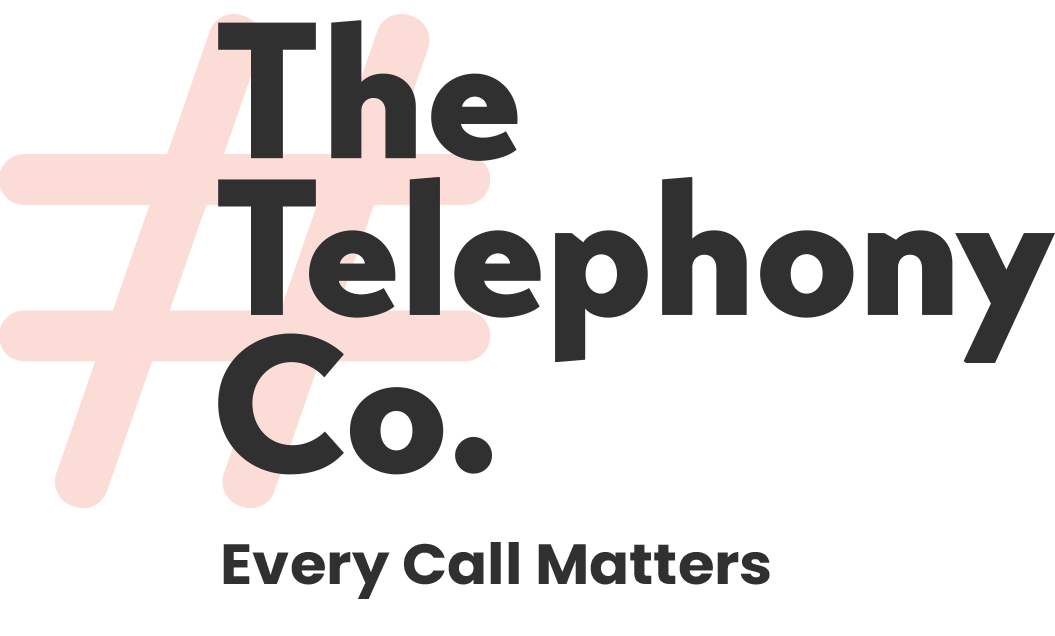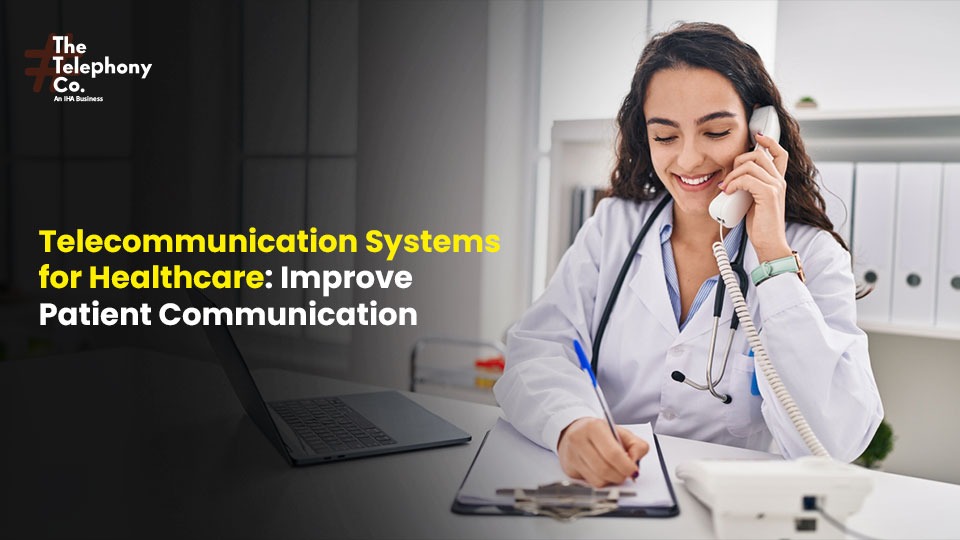How Telecommunication Systems for Healthcare Improve Patient Communication. In the healthcare industry, effective communication is more than a necessity; it’s essential for successful patient care. Telecommunication systems have emerged as vital tools that transform how healthcare professionals interact with patients. These systems simplify sharing information, coordinating care, and enhancing the overall patient experience. This blog will delve into how telecommunication systems improve patient communication in healthcare settings and discuss the crucial role played by solutions offered by The Telephony.Co.
Understanding Telecommunication Systems in Healthcare
Telecommunication systems in healthcare encompass various technologies and tools that facilitate communication among healthcare providers, patients, and administrative staff. This includes traditional phone systems, video conferencing platforms, messaging services, and integrated communication systems. These tools allow healthcare providers to connect with patients, share important information, and schedule appointments seamlessly.
With the rise of telehealth, these systems have become even more vital, providing patients with access to care from the comfort of their homes. For example, hospitals can utilize telecommunication systems to ensure patients receive timely advice and consultations without needing to visit a facility physically. This transition to digital communication has reshaped how healthcare services are delivered, allowing for a more flexible and efficient approach to patient care.
The Shift Toward Telehealth
The adoption of telehealth has gained significant traction in recent years, enabling healthcare professionals to conduct remote consultations. This shift has made healthcare more accessible, particularly for patients in remote areas or those with mobility challenges. Telecommunication systems allow patients to consult their doctors without lengthy travel or waiting times.
Telehealth consultations have been shown to improve patient satisfaction by offering convenience and flexibility. Patients can communicate with their healthcare providers through video calls, secure messaging, or phone calls, making it easier to discuss health concerns and receive timely care. The ability to receive care from home can significantly reduce stress and anxiety, making it an appealing option for many patients.
Are you Looking to Enhance your Healthcare Communication?
Learn how to The Telephony.Co can support your organization with innovative telecommunication solutions.
Improving Patient Engagement
Telecommunication systems play a vital role in enhancing patient engagement. When patients feel more connected to their healthcare providers, they are more likely to take an active role in their care. This engagement can lead to better health outcomes and improved overall satisfaction.
Through secure messaging and patient portals, healthcare providers can share important information, such as test results and treatment plans, directly with patients. Patients can also ask questions and receive answers promptly, fostering a sense of partnership in their healthcare journey. This level of interaction encourages patients to adhere to their treatment plans and take an active interest in their health.
Streamlining Appointment Scheduling
Managing appointments can often be a daunting task for both patients and healthcare providers. Telecommunication systems simplify this process significantly. Automated appointment reminders sent via phone calls or text messages help reduce missed appointments and ensure patients stay informed about their schedules.
Additionally, online booking systems allow patients to schedule, change, or cancel appointments conveniently. This flexibility not only enhances patient satisfaction but also improves the efficiency of healthcare practices. Reducing the burden of administrative tasks allows healthcare providers to focus more on patient care rather than getting bogged down with scheduling issues.
Improving Care Coordination
Effective communication is essential for coordinating care among healthcare providers. Telecommunication systems facilitate this collaboration by enabling seamless information sharing. Healthcare professionals can easily communicate with each other regarding patient care plans, medication management, and treatment updates.
By using secure messaging platforms and shared electronic health records (EHR), providers can ensure that everyone involved in a patient’s care is informed and aligned. This collaborative approach reduces the risk of errors and misunderstandings, ultimately leading to better patient outcomes. For instance, if a patient is referred to a specialist, the primary care provider can send all relevant medical history and test results through the telecommunication system, ensuring a smooth transition of care.
Enabling Remote Monitoring and Follow-Up
Telecommunication systems also play a crucial role in remote patient monitoring. With advancements in technology, healthcare providers can monitor patients’ vital signs and health metrics from a distance. This capability is particularly beneficial for managing chronic conditions such as diabetes or hypertension.
Patients equipped with wearable devices or mobile health applications can share their health data with their providers in real time. This information allows healthcare professionals to track patients’ progress and make necessary adjustments to treatment plans while maintaining open lines of communication. Remote monitoring can lead to earlier interventions and better management of health issues, reducing the likelihood of hospitalizations.
Ensuring Security and Compliance
While telecommunication systems offer numerous benefits, maintaining the security and privacy of patient information is of utmost importance. Healthcare providers must ensure that they use secure communication channels that comply with regulations such as HIPAA (Health Insurance Portability and Accountability Act).
By implementing encrypted messaging and secure video conferencing tools, healthcare organizations can protect sensitive patient data. This commitment to security builds trust between patients and providers, encouraging open communication. Patients need to feel confident that their information is safe, and healthcare providers must prioritize security in their telecommunication systems.
Enhancing Patient Education
Telecommunication systems are essential for patient education. Healthcare providers can use video calls and messaging platforms to share educational resources, explain treatment options, and guide patients in managing their health conditions.
By providing easy access to information, healthcare organizations empower patients to make informed decisions about their care. This knowledge fosters greater engagement and adherence to treatment plans, resulting in improved health outcomes. For instance, a healthcare provider can send patients links to educational videos or documents about their condition, allowing them to understand their treatment better.
The Role of Telephony Solutions in Healthcare
When it comes to enhancing communication within the healthcare sector, The Telephony.Co stands out as a trusted partner. As a 3CX Gold Partner, The Telephony.Co specializes in providing cutting-edge telecommunication solutions tailored to meet the unique needs of healthcare providers.
From implementing advanced VoIP systems to facilitating telehealth consultations, The Telephony.Co has the expertise to help healthcare organizations improve their communication processes. Their user-friendly solutions ensure that both providers and patients can easily navigate the technology, resulting in more effective interactions.
Moreover, The Telephony.Co understands the importance of security in healthcare communication. Their solutions prioritize patient privacy and compliance with regulatory standards, enabling healthcare organizations to communicate confidently and securely.
Future Trends in Telecommunication for Healthcare
The healthcare industry is continually evolving, and telecommunication systems will play an increasingly important role in shaping its future. Some emerging trends include:
- Increased Adoption of Telehealth: As technology advances, more healthcare providers are likely to adopt telehealth solutions. This shift will allow for greater flexibility in patient care and a broader reach for providers.
- Integration of Artificial Intelligence: AI technologies are beginning to be integrated into telecommunication systems, providing healthcare organizations with advanced tools for patient engagement, scheduling, and data analysis.
- Enhanced Mobile Solutions: The proliferation of smartphones and tablets will continue to impact healthcare communication. Mobile applications will likely play a significant role in how patients interact with their providers.
- Focus on Patient-Centric Care: Telecommunication systems will increasingly prioritize patient-centered approaches, ensuring that patients have a voice in their care and access to the information they need.
- Emphasis on Data Security: As cyber threats become more sophisticated, healthcare organizations will need to invest in strong security measures to protect patient data in their telecommunication systems.
Conclusion
Telecommunication systems are changing the way healthcare providers talk to patients. By making it easier for patients to reach out, simplifying how appointments are managed, and improving how care is coordinated, these systems help enhance the patient experience and lead to better health outcomes.
As healthcare continues to change, using effective telecommunication technologies is essential for providing top-notch, patient-centered care. By partnering with The Telephony.Co, healthcare contact center software providers can access innovative solutions that improve their operations and boost patient satisfaction.
Looking to improve how you communicate with patients? Reach out to The Telephony.Co today! Let’s find the right solutions together to make your healthcare services better and easier for everyone.

